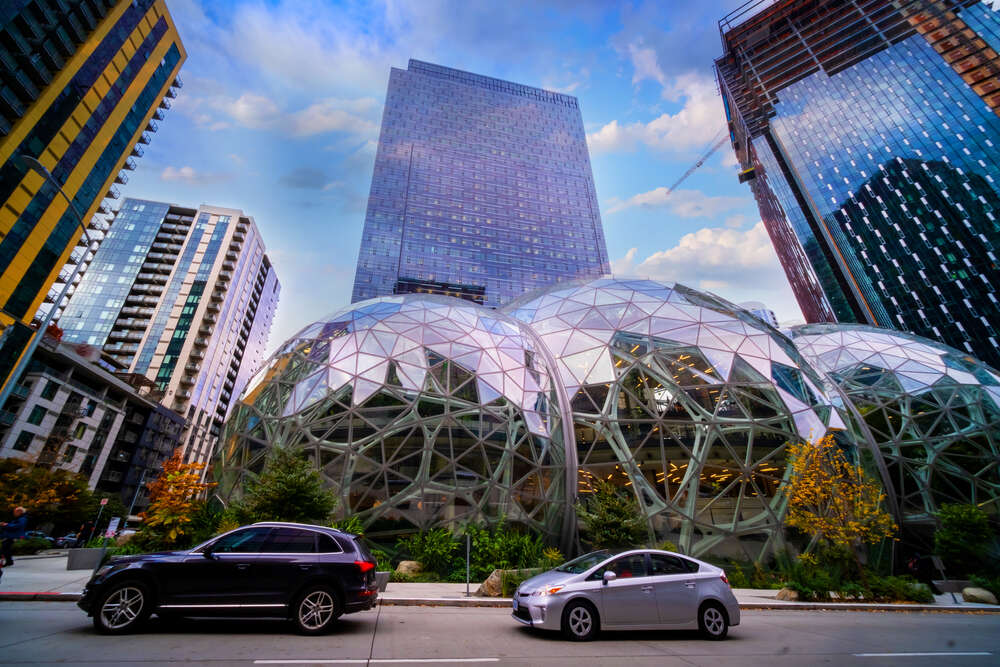
With urbanisation sweeping across all corners of the globe and advances in AI shaping the smart cities of tomorrow, what does a city have to do to be ‘future-ready’?

This doesn’t necessarily mean spaceports and driverless cars, however. In fact, a new report from Point2 suggests that many American cities are gearing up for the future quite well under a different set of metrics.
Evaluating future-ready cities
To grasp a clearer image of America’s future-ready cities, Point2 evaluated the 100 largest US metros based on 30 key metrics distributed across five core pillars: Business & Technology; Internet Connectivity; Environment & Sustainability; Transit & Mobility; and Economy & Demographics. Their results provide a comprehensive snapshot of where cities stand on their path toward a more innovative and sustainable tomorrow.
The most prepared cities
Topping the list as the most future-ready city is Seattle. This city stands out in various metrics like the number of start-ups, invention patents, median annual income, and the influx of degree-holders. Furthermore, Seattle’s emphasis on ‘bikeability‘ is noteworthy, considering the growing global importance of sustainable transport.
Following Seattle, the tech-heavy city of San Jose, California, ranks second, followed by Denver, Colorado, San Diego, also in California, and Austin, Texas.
Which cities performed best under the five pillars?
- Business & Technology: California seems to be a dominant force in this realm, particularly with San Jose and San Diego leading in the number of invention patents submitted in recent years. Moreover, San Francisco trails only behind New York City in the number of start-ups.
- Internet Connectivity: In the digital era, internet accessibility is paramount. Surprisingly, Sacramento, California, Plano, Texas, and Garland, Texas, emerged as connectivity leaders, largely due to high-speed mobile broadband coverage and significant household internet access.
- Environment & Sustainability: Cities are actively embracing green solutions. Seattle, Sacramento, and San Diego lead the way in alternative fuel stations, while Washington DC and NYC boast the highest number of green-certified buildings.
- Transit & Mobility: Emphasising sustainable transit options, cities like Minneapolis, Minnesota, have excelled in bike-sharing programmes, making commuting greener and more efficient.
- Economy & Demographics: A robust economy coupled with a diverse and skilled populace drives innovation. Cities like Arlington, Virginia, Fremont, California, and Gilbert, Arizona, demonstrate a promising blend of high income, low unemployment, and poverty rates, making them poised for future growth.
Spotlight on the top three future-ready cities
Seattle shows an unwavering commitment to innovation across all five pillars in perhaps the best bid to be future-ready. Despite challenges faced by local governance, the city, buoyed by tech giants like Microsoft and Amazon, continues to advance forward.
San Jose often regarded as the heart of Silicon Valley, showcases its tech prominence and is consistently working on refining urban planning. Its move towards a density-focused approach suggests a promising trajectory towards a modern cityscape.
Denver, known as an aerospace hub, faces familiar challenges like those of San Francisco and Los Angeles, especially in terms of housing costs. Yet, Denver’s active participation in discussions around urban challenges signifies its commitment to a brighter future.
Conversely, cities like Laredo, Texas, and Las Vegas, Nevada, lag behind, facing severe challenges in internet connectivity, and business and tech innovation, respectively.
[Read more: Wrap it up and start again: The future of London’s housing]






